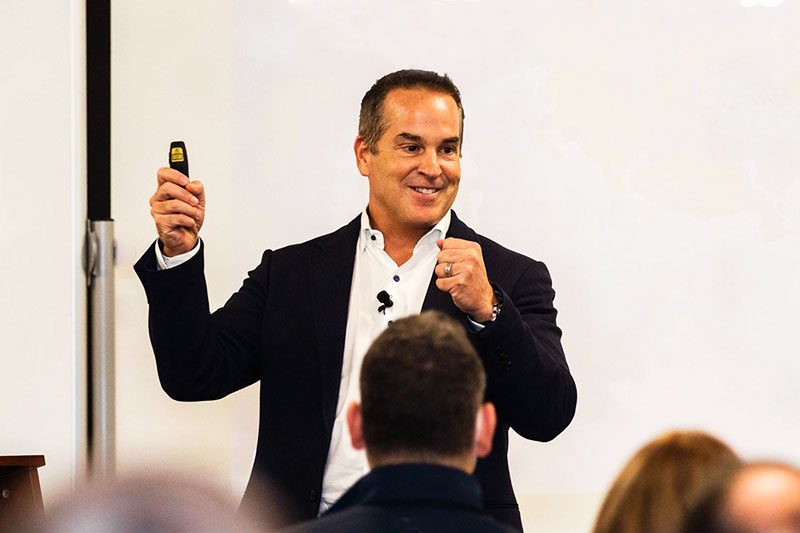As leaders, we get a lot of things right, but we also get things wrong—we are only human after all. It’s when we keep getting the same things wrong (often a mindset), that our ability to lead effectively diminishes. I want to talk about the top three things I think leaders get wrong.
- A Fixedness Mindset
We all know what this looks like, and it always begins with, “That’s the way we do things here,” or “If it ain’t broke, don’t fix it.”
Phil, a sales savant I worked with several years ago, was about to lose everything he had worked so hard to build because of his fixedness mindset. Phil sold $75 million a year, and his clients loved him. Out of a team of 1,200 salespeople, he was our No. 2. This all sounds great, right? And it was… from Phil’s and his customers’ perspectives. In Phil’s mind, what he was doing was working amazingly well.
Then his termination letter came across my desk. Clearly, something wasn’t working well. Why is our No. 2 salesperson being fired? I talked to all levels of his team and discovered that while he was a prince to his customers, he was a jerk to everyone inside the office. This had been going on for years. He had been spoken to multiple times about his lack of professionalism in the office, but Phil refused to change Why would he fix something that, in his view, wasn’t broken? Everyone had reached their breaking point. It was time for Phil to go.
I decided to meet with Phil, and I came right to the point, “They’re going to fire you.”
“What? That’s bullshit. You can’t do that. I’m one of the company’s best salespeople,” Phil said.
“No one will ever debate how great a salesperson you are,” I told him. “I’ve been on calls with you. You’re a gentleman. You’re gracious. You’re an incredible listener. But in the office, you are not that guy. You tell everyone how stupid they are. You take care of the client while running over everyone else.”.
“But” he argued, “I’m not doing that for me, I’m doing that for the client, and clearly it’s working.”
“When no one in the company wants to help you make that sale, the way you’ve always done things is no longer working. It takes 30 people in the company to help you create a proposal and close the sale, but right now, not one person in the company is willing to help you.”
He was devastated. He only saw himself as a superstar producer, a hero to our customers. No matter how many times his bosses had spoken to him, he had been unable to see past his own fixedness to realize that his way was not working as well as he thought. It took the prospect of losing his job for Phil to finally realize that he needed to make changes.
“I love what I do. I’ll do anything to make it right, just name it and I’ll make it happen tonight.”
I explained to Phil that this wasn’t an overnight fix and that it would require a concerted effort on his part to treat his team members as well as he treated his customers.
“But what if we miss a deadline?” he asked.
So, this was the root of Phil’s fixedness. Phil had all the skills to be a great leader within the company, but he was only using those skills with his customers. He used a second set of “skills” that he thought he needed to employ with his team to get them to do the job right and on time. Because his team performed well despite how badly he treated them, Phil convinced himself that how he was dealing with his team was part of his formula for success.
“People will surprise you, Phil. They won’t miss the deadline,” I assured him. “You’ve got a team of good people who deserve to be treated with respect and appreciation.”
Phil was finally ready to recognize the need for change. He strategized on how to best launch his change and he stuck with it. Then he took the biggest leap of all; he put his trust in his team’s ability to get the job done.
There’s more than fixedness to the Phil predicament which leads me to the second common mistake leaders make: Underestimating the ability of their team. In Phil’s scenario, underestimating abilities worked both ways. Phil believed that if he didn’t ride the team, they were incapable of meeting deadlines, and the team believed that Phil was incapable of making the changes necessary for him to remain with the company. They were both wrong. - Underestimating the Ability of Their Team
We hire people because we believe they can get the job done. Then we bring them on board and often deny them the opportunity to use their abilities to their full potential. There are numerous rationales as to why leaders do this. Perhaps you don’t want to “overwhelm” your employee, to that I’d say, if you were clear and honest with them about the role and responsibility of the job and you have provided them the support and resources to get the job done, get out of their way and let them get to it.
Another driving force is often fear of failure. Leaders worry that if they don’t maintain close oversight and have the employee check in with them before taking actions, things won’t get done when and how they should get done. Mistakes will be made. To that I’d say, of course mistakes will be made and failed attempts will occur, but isn’t that how we all learn and grow? If a leader doesn’t allow their team members to stretch themselves, to make decisions, to be part of the company’s forward momentum, guess what? There will be no forward momentum.
I’m not suggesting a leadership style of, “You’re on your own now, good luck.” There must be ongoing engagement between leaders and those they lead, but it’s not about telling them what to do. It’s about providing them opportunities to learn and increase their skills every day. Guide your team members through ongoing coaching by committing to investing in a little extra time to show someone how to improve a specific skill or attribute. Build this practice into the fabric of your company culture.
Phil’s underestimation of his team was based on his fear that they would fail him. But why, in the first place, did he assume they couldn’t get the job done if he didn’t treat them as if they were idiots? Perhaps it was his unconscious biases? Let’s take a look at the third thing leaders get wrong. - Unaware of Unconscious Biases
Every leader, no matter how experienced or successful, must continually check their unconscious biases. Because we are biologically wired to gravitate towards others who are similar to us, we form unconscious biases related to race, gender, age, education, income level; the list goes on. These are affinity biases, which can result in preferential treatment of those for whom we feel affinity, and exclusionary and discriminatory behavior for those with whom we cannot see the commonalities we might share. If we don’t pay attention, we will build a team in which every member looks, believes, thinks, and acts like us; a path that leads to a fixedness mindset.
There are also confirmation biases. We form an opinion or belief about something and then we seek evidence to confirm our opinion or belief and disregard evidence that says otherwise. Marketing comes up with a great idea for a campaign—everyone loves it and the research they’ve done points to its success. But because everyone is so enamored with the idea, the team unconsciously neglects the research that indicated the demographic it would be successful with was much younger than their target demographic. A costly bias.
Perhaps Phil felt more affinity for his customers than he did his in-house team, leading him to treat the two groups differently. Or maybe a poor experience with a previous office team led him to believe all office workers were incompetent. He further confirmed this belief by listening only to the negative experiences shared by his colleagues.
I’m speculating as to Phil’s why, but it speaks to the critical need to be aware of any differential treatment or oversights we may be practicing and then honestly reflect on where they’re coming from.
Another bias that plays out in the workplace is conformity bias. This occurs when an individual agrees with what others say, even if their opinions and ideas are different from the ones expressed. This is an easy trap for leaders to fall into if they don’t respect their inherent power as a leader. To disagree with the boss can be risky, so unless you have intentionally set the tone that you genuinely welcome discourse and challenges to your ideas, those you lead may feel safer believing that all your ideas are amazing and that they have no better ones to offer. Without an honest exchange of ideas, there is no hope for true innovation.
Everything you do as a leader connects to what’s going right and what’s going wrong in your organization. Pay as close attention to your words and actions as those you lead do. If you practice or allow a fixedness mindset, that is what you will receive in return. If you underestimate the ability of your team members, they will stop striving to be the best or they will leave for an organization that encourages them to thrive. If you don’t frequently check and address your unconscious biases, you risk making critical decisions based on unfair and uninformed assumptions.
Leadership is hard. It requires constant awareness of what and how you are doing. It’s important to both acknowledge and address what’s going wrong and to celebrate what you’re doing right.














